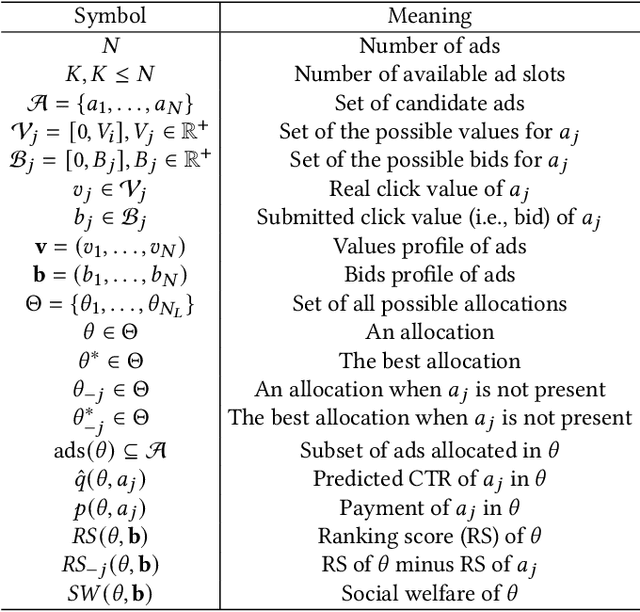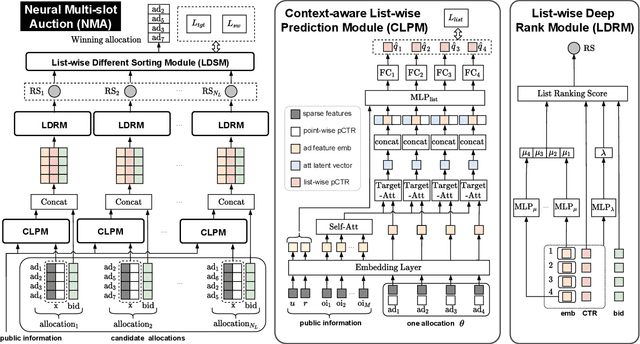Bingqi Zhu
Deep Automated Mechanism Design for Integrating Ad Auction and Allocation in Feed
Jan 03, 2024



Abstract:E-commerce platforms usually present an ordered list, mixed with several organic items and an advertisement, in response to each user's page view request. This list, the outcome of ad auction and allocation processes, directly impacts the platform's ad revenue and gross merchandise volume (GMV). Specifically, the ad auction determines which ad is displayed and the corresponding payment, while the ad allocation decides the display positions of the advertisement and organic items. The prevalent methods of segregating the ad auction and allocation into two distinct stages face two problems: 1) Ad auction does not consider externalities, such as the influence of actual display position and context on ad Click-Through Rate (CTR); 2) The ad allocation, which utilizes the auction-winning ad's payment to determine the display position dynamically, fails to maintain incentive compatibility (IC) for the advertisement. For instance, in the auction stage employing the traditional Generalized Second Price (GSP) , even if the winning ad increases its bid, its payment remains unchanged. This implies that the advertisement cannot secure a better position and thus loses the opportunity to achieve higher utility in the subsequent ad allocation stage. Previous research often focused on one of the two stages, neglecting the two-stage problem, which may result in suboptimal outcomes...
NMA: Neural Multi-slot Auctions with Externalities for Online Advertising
May 20, 2022



Abstract:Online advertising driven by auctions brings billions of dollars in revenue for social networking services and e-commerce platforms. GSP auction, which is simple and easy to understand for advertisers, has almost become the benchmark for ad auction mechanisms in the industry. However, the allocation stability of GSP depends on the separable CTR assumption, which means that GSP considers neither position-dependent externalities nor ad-dependent externalities in multi-slot scenario, leading to suboptimal performance. Some GSP-based deep auctions (e.g., DeepGSP, DNA) have attempted to upgrade GSP with deep neural networks, while only modeling local externalities and thus still suboptimal. On the other hand, although VCG-based multi-slot auctions (e.g., VCG, WVCG) take externalities into consideration, they lack an efficient balance of both revenue and social welfare. In this paper, we propose a novel auction named Neural Multi-slot Auction (NMA) to tackle the above-mentioned challenges. Specifically, we model the global externalities effectively with a context-aware list-wise prediction module to achieve better performance. We design a list-wise deep rank module to guarantee incentive compatibility in end-to-end learning. Furthermore, we propose an auxiliary loss for social welfare to effectively reduce the decline of social welfare while maximizing revenue. Experiment results on both offline large-scale datasets and online A/B tests demonstrate that NMA obtains higher revenue with balanced social welfare than other existing auction mechanisms (i.e., GSP, DNA, WVCG) in industrial practice, and we have successfully deployed NMA on Meituan food delivery platform.
 Add to Chrome
Add to Chrome Add to Firefox
Add to Firefox Add to Edge
Add to Edge